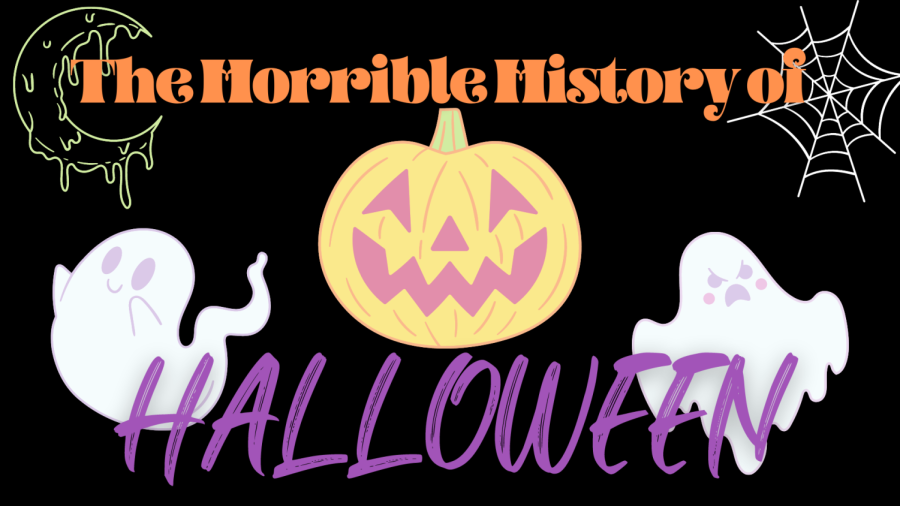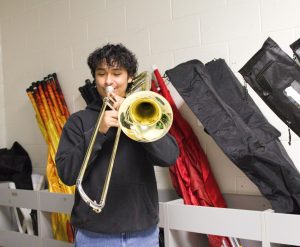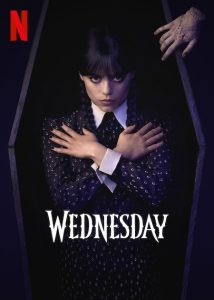The Horrible History of Halloween
Oct 29, 2021
It’s Oct. again folks, heading into the last few days of the month. Leaves are changing, the sun is setting earlier, and that chilly weather is starting to get people to bring out their hats and mittens. As the end of the month approaches us, it brings one of the creepiest and most terrifying days of the year. Oct. 31, the date of Halloween, the scariest day of the year. It’s the one day of the year where children can go out and legally threaten adults with the threat of mischief of plastic pumpkin buckets are not filled to the brim with chocolates and sweets, where vampires and witches are a common sight, and where the shadows in the night are not feared, but welcome.
“One of my favorite things about Halloween is carving pumpkins and throwing the guts at my siblings,” says Camden Maday, sophomore.
But how did this holiday come to be? How was this holiday created? And how, amongst all of the holidays in the year, is it so popular?
To take a closer look at the holiday, one must closely examine the name of the day. Halloween is the combination of two words into one, All Hallow’s Eve, also known as All Saints Eve, which is the day before a Catholic Holy Day of Obligation, which means all Catholics are required to attend mass. Halloween is the day before All Saints Day, which is a day of celebrating and honoring the faithfully departed on Nov. 1. Halloween also incorporates traditions from a centuries-old celtic holiday, Samhain.
Samhain is the ancient celtic celebration of the Fall harvest, which is still celebrated today by Wiccans and others. The Celtics believed that on the night before the beginning of Winterthe lines between the land of the dead and the world of the living became blurred and the dead were able to walk in the land of the living for that one night. In order to commemorate the night, the Celtics wore costumes usually made from animal skins and lit giant sacred bonfires in order to honor their gods, such as the Morrigan, goddess of war, and Lugh, the trickster god. Eventually, with the growth of Christianity Rome and most of Europe, Samhain was blended with the Catholic holy day of observation, All Saints Day, after Samhain had already been combined with the Roman holidays Feralia, a day to celebrate the dead, and the day of Pomona, the Roman goddess of fruit and trees. All Saints Day was called All-Hallowmas, taken from the Middle English word Alholowmesse, meaning All Saints Day, with the day before the traditional date of Samhain being called All-Hallows Eve.
With the colonization of the Americas and the immigration of European immigrants to the colonial Americas, the traditions of All-Hallows Eve eventually made their debut. In the Northeast, any celebrations of the Autumn holiday were severely restricted due to the Puritan influence in that part of the county. In the southern colonies, it was more common to find Fall celebrations and small parties celebrating the coming of the harvest and the beginning of winter. Mischief-making and story-telling were prominent in these celebrations, but the trend did not catch on throughout the years. However, in the second half of the nineteenth century, Irish immigrants fleeing the Irish Potato Famine brought a more prominent appreciation for the Fall holiday to the United States.
During the colonization of the Americas, Europe was changing how All Hallows Eve, as it was known at the time, usually went as the years went by. In the sixteenth century, the practice of begging for small spice-filled raisin cakes cut with the shape of a cross, called Soul-Cakes, in exchange for prayers for the souls in purgatory came to be. The practice, known as Souling, was generally done by the poor and was meant to help the souls in purgatory, which was thought to be the in-between for heaven and hell for the Christian religion, and the souls could only be helped to move on through prayer or money given to the church. This is thought to be an early version of Trick or Treat, or at least have some influence on the Halloween tradition. Another event that is said to have a major impact on the holiday is Guy Fawkes Day, a day in history in which a group of Catholics attempted to assassinate the protestant King James I of England. Guy Fawkes was named as perpetrator in the scheme, and the date is known in history as one where anti-catholic sermons and the threats of vandalism of catholic properties unless one was given sweets or treats. The two influences combined created the mish-mash tradition of Trick or Treating.
These traditions and influences were brought over the United States, along with tradition of Jack o’ lanterns, which were meant to ward off evil spirits and were originally carved into turnips but quickly adapted to using pumpkins. Only immigrants actually practiced All Hallows Eve. The mischief and vandalism of Guy Fawkes Day remained, however, a Kansas woman named Elizabeth Krebs grew annoyed by the constant vandalism that happened every Halloween, and decided to do something about it. She organized a parade, party, and costume contest in 1914 that successfully distracted the children of the town to keep them from vandalizing the village. Her story of success was copied in nearby towns and it spread slowly, but Halloween as it is today until the mid-1920’s. The act of going door-to-door for candy and the celebration of the last October has been a mainstay since that decade.
Although in the 1950’s there was much encouragement for parents and community leaders to lessen the fear and mischief of Halloween, with advent of horror flicks such as “Nightmare on Elm Street” and “Friday the Thirteenth,” horror and Halloween became inseparable and one is always associated with the other, as seen with the rise of haunted houses and ghost tours. Halloween nowadays is a secular holiday, except for Wiccans, Neo-Pagans, and even Catholics. It’s one of the most commercially wealthy holidays, with Americans spending 8.8 billion dollars in 2019 on the holiday. Halloween is known as the day where children dress up as their favorite superhero or a cute animal and knock on strangers doors for candy, the only day where it’s acceptable to do so. However, even with all the plastic pumpkins and glittering cotton spider webs, the origin of Halloween came from tales of spirits wandering the world of the living and the fear that something was staring back in the dark.
“Halloween has nice weather, pleasant weather, some might say,” sophomore Logan Hunter says, “It also has obscene amounts of sugar.”
Sources:
History.com Editors. “Halloween 2021.” History.com, A&E Television Networks, 18 Nov. 2009, https://www.history.com/topics/halloween/history-of-halloween.
Mark, Joshua J. “History of Halloween.” World History Encyclopedia, World History Encyclopedia, 23 Oct. 2021, https://www.worldhistory.org/article/1456/history-of-halloween/.











